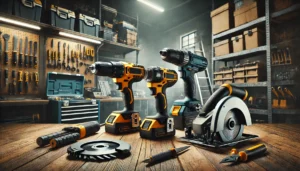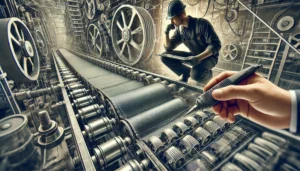In several industries, fasteners are important components since they hold different parts together, which makes them especially critical for any mechanical assembly. Their role in construction, automotive, aerospace, or industrial machinery makes encasing fasteners of optimal strength, durability and performance, an absolute requisite. As industries progress and require more sophisticated materials, surpassing the needs of the forming and combining device and structure, the innovations in fastener materials have worked towards increasing strength, corrosion resistance, and overall component longevity. These improvements counter the issues created by harsher surroundings, as well as the necessity of fragments that are easier to lift while being stronger, and more efficient.
Advancements in Fastener Materials
The common fasteners were previously fabricated from steel, stainless steel or aluminum alloys. Even though these materials performed well in many industries, they can seldom withstand excessive conditions such as high temperatures, chemical moisture or corrosion. Hence, fastener manufacturers have been trying to substitute these materials with better advanced technology. The target is advanced performance fasteners that are well suited in strength and reliability without compromising where it is needed.
High-Performance Alloys
Challenging the limits of fastener materials has led to the development of new high-performance alloys. For instance, the new alloys such as super duplex stainless steels exhibit excellent resistance to chloride pitting, crevice corrosion, and stress corrosion cracking. This makes it ideal for use in oil and gas, chemical processing, and other aggressive environments. To achieve optimum value in these alloys, a balanced composition of chromium, molybdenum, and nickel is needed. These materials exhibit advanced corrosion resistance and can endure the harshest conditions without sustaining damage.
An additional high performance alloy that emerged from copper nickel alloys is a specialized set of high strength plus strong alloys with advanced above average corrosion resistance. Materials of this classification are engineered to be used in industries like aerospace, automotive and construction where both strength and corrosion resistance is needed.
Coating Technologies
New breakthroughs in mounting technologies have changed the game when it comes to the performance of fasteners, specifically addressing corrosion resistance. This innovation is best seen in zinc flake coatings. Unlike normal electroplating, zinc flake coatings are devoid of hydrogen embrittlement risks that can weaken the material. These coatings are formed as a mixture of zinc and aluminum flakes bound together in an inorganic matrix. The outcome is a strong fastener surface design that is resistant to corrosion and harsh environmental conditions.
Furthermore, other protective coatings such as ceramic and PTFE(polytetrafluoroethylene) silicate coatings are now being applied to fasteners to protect them against chemical, high temperature, and wear. These coatings can greatly increase the lifespan of fasteners in extreme environments such as chemical plants, power generation, and even marine settings.
Composite Materials
Composite Materials ‘faster’ are one of the intricate details of technology that stand out and offer great promise in the field of engineering. Research conducted on these materials suggest that they are dependable for fasten designs since results reveal their strength and resistance to impact.
Advanced composites such as carbon fiber reinforced polymers(CFRPs) and glass fiber composites are replacing certain applications of metal fasteners. These composites have benefits which include relatively greater weight strength ratio over corrosion resistance and increased fatigue strength.
These composites are useful in the automotive and aerospace industries typically where performance is of utmost importance. In the aerospace field, for instance, the use of composite fasteners considerably cut down the weight of aircraft without compromising the overall performance leading to improvement in fuel efficiency and overall performance as well. Also, these materials are beneficial in a non-corrosive environment with moisture and chemicals.
Surface Treatment Innovations
The Role of Artificial Intelligence Surface treatments of fasteners have always been a critical aspect of amplification of strength and resistance capabilities. One of the most recent innovations, sparkle plasma sintering (SPS) technology, has unlocked the possibility for creating ultrafine grained alloys of superior mechanical properties. Sintering by Spark Plasma (SPS) is where the two powders are pulse heated and rapidly pressed together, which produces stronger and more corrosion resistant fasteners. These novel treatments do not only serve to increase the strength of the fastener instead they also enhance the robustness of the fasteners in extreme conditions found in the nuclear, automotive, and energy industries.
An equally impressive advancement in surface treatments is the invention of new advanced coatings as diamonds-like carbon (DLC) coatings. DLC is a coating with excellent wear resistance and is extensively applied in high performance fastening tools such as high-speed machinery and automobile engine parts.
Machine Learning and Alloy Design
Machine learning and artificial intelligence (AI) are increasingly being integrated into the fastener design process. These advances in technology have revolutionized the entire steps of the fastener design process. Along with high-throughput calculations, machine learning algorithms can simulate the performance and outcomes of numerous alloy combinations, significantly easing the process of material selection. These assist with the development of complex materials, in terms of strength, corrosion resistance, and even durability. The wide variety of data available makes the selection much more accurate alongside the quickened production of advanced fasteners.
For example, experts are applying computer-assisted design to create alloys that can resist corrosion and are fit for extreme conditions like seawater s or acid chemicals. Large datasets that contain material properties are analyzed by machine learning algorithms to find the right compositions, and these processes greatly speed up the experimental testing time and push down the costs too.
Future Directions in Fastener Materials
For the future of fastener materials, the main goal lies in accomplishing greater strength while keeping light weight, improving performance in extreme conditions, and enhancing corrosion resistance. Enhanced manufacturing technologies, like the newest additive (3D-printing) techniques, are being studied to create fasteners with desired properties. Complex geometries that were very challenging or even impossible with normal manufacturing can be easily produced with these technologies.
Moreover, research continues on smart fasteners that have embedded sensors or monitoring systems. These smart fasteners can provide real-time data on the performance of the connection, and adequately address the user before loosening or excessive wear cause too much trouble. This advancement could revolutionize the world of fasteners, especially for critical infrastructure constructions and aerospace wonders, as they will greatly increase the safety and reliability of fastener applications.
Conclusion
The new innovations in fastener materials have greatly improved the strength, resistance to corrosion, and general durability of these materials. The fastener industry is changing because of the new high-performance alloys and coatings, composite materials, machine learning in alloy design, and more. Companies will always look for greater value leading to further research that is essential, and development is critical to respond. Undoubtedly, the prospect of fastener materials is bright and even more dependable and efficient fasteners will be achieved through advancing technologies and manufacturing techniques.










